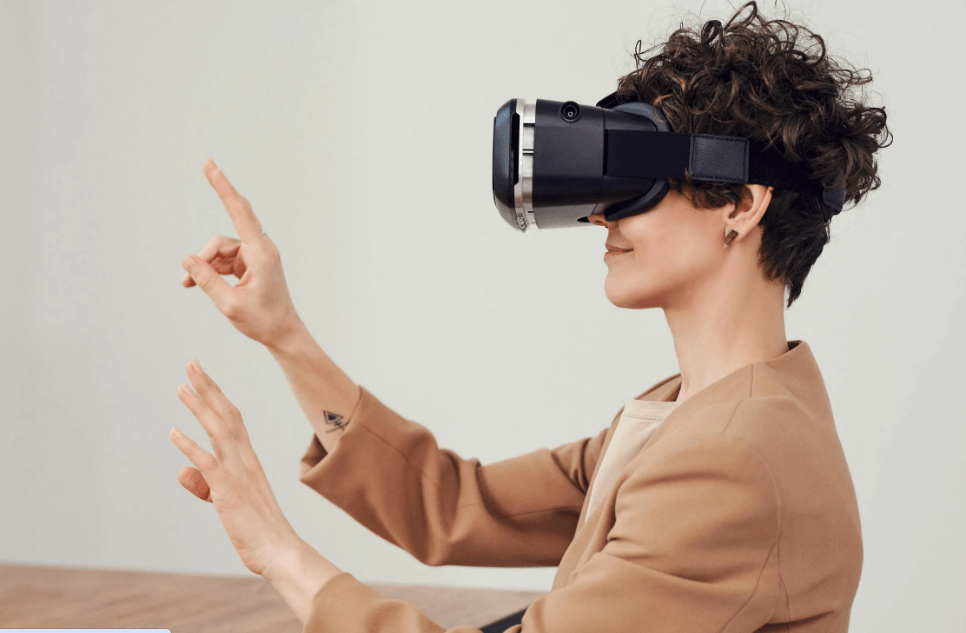The concept of augmentation has transitioned from the realm of sci-fi to real-world applications, transforming the way we experience life, work, and interact with technology. But what does it truly mean to be augmented, and how is it shaping our human identity today?
This blog explores the essence of augmentation, its applications in both physical and cognitive realms, and the impact it has on our personal and professional lives. Whether you’re new to the idea of augmentation or curious about its future, this guide is here to break it all down.
Understanding Augmentation
Augmentation refers to enhancing human abilities through the use of technology. It can be physical, cognitive, or even emotional. The aim is not to replace human capabilities but to supplement and amplify them, enabling individuals to perform tasks better, faster, or in entirely new ways.
From wearable tech that tracks your health to AI tools that streamline your workday, augmentation bridges the gap between human potential and technological innovation. But it goes beyond just tools; it taps into the limitless possibilities of what humans can achieve with the right assistive technologies.
Types of Augmentation
- Physical Augmentation
Physical augmentation revolves around enhancing human physical abilities. Think of prosthetics, exoskeletons, or wearable health devices like smartwatches. These technologies improve mobility, boost strength, or provide critical health insights in real time.
For instance:
– Prosthetics: Advanced prosthetic limbs powered by AI can mimic natural movements, improving the lives of the physically impaired.
– Exoskeletons: Devices like those from Ekso Bionics can help individuals regain mobility or assist workers in heavy-lifting industries.
- Cognitive Augmentation
Cognitive augmentation involves improving mental capabilities using AI, machine learning, and neuroscience. Tools like digital assistants, advanced language processing software, and data analytics platforms fall into this category.
Examples include:
– AI-powered writing assistants like Jasper and Grammarly that help create clear, compelling content.
– Decision-making tools that provide data-driven insights. For instance, AI systems recommend the best supply chain models for businesses or suggest medical interventions based on a patient’s history.
- Sensory Augmentation
This form of augmentation aims to enhance or even create sensory experiences. From hearing aids to augmented reality (AR) devices, sensory augmentation opens new windows of perception.
Sensory technologies include:
– Hearing aids that custom-fit real-time soundscapes to a user’s needs.
– AR glasses that overlay digital information onto the physical world, creating immersive experiences for training, gaming, or navigation.
Real-World Applications
Augmentation has found its place in various sectors, revolutionizing day-to-day operations. Here’s how:
Healthcare
Healthcare is strategically leveraging augmentation to save lives and enhance patient quality of care.
- Surgical Robots like Da Vinci systems allow surgeons to perform minimally invasive procedures with precision.
- Wearables enable remote patient monitoring, detecting irregularities such as heart arrhythmias or sleep disorders in real time.
Workplace Optimization
From managing workloads to creating safer environments, augmentation is changing how we work:
- Exoskeletons are invaluable in physically demanding jobs, reducing the risk of injury.
- AI tools assist in automating repetitive tasks, leaving employees to focus on strategic initiatives.
Education
Education systems now rely on augmented tools to create more interactive learning environments.
- Language-learning apps like Duolingo use cognitive augmentation by tailoring lessons to your ability.
- AR and VR platforms bring simulations into classrooms, allowing students to experience history, science, or space exploration firsthand.
Entertainment and Leisure
Whether in gaming, sports, or social media, augmentation is enhancing recreational experiences.
- AI-driven sports analytics help players evaluate performance, improving skillsets.
- AR-based gaming such as Pokémon GO integrates the real world with virtual play.
The Human Impact of Augmentation
While the tools of augmentation provide excitement, they also spark significant discussions surrounding ethics, identity, and societal impact.
Redefining Human Potential
Augmentation empowers individuals, particularly those with disabilities, to overcome limitations. Yet, it also raises a question about what it means to be “truly human.” If AI and exoskeletons contribute to our performance, do they become part of our identity?
The Risks of Dependency
Technology can amplify skills, but could it lead to overdependence? For instance, while GPS navigation is helpful, constant reliance can erode our natural navigation abilities. Striking a balance becomes essential.
Ethical Concerns
Who gets access to augmentation technologies? If only privileged sections of society can afford these advancements, the gap between different socio-economic groups could widen, raising serious ethical concerns.
The Future of Augmentation
With augmentation evolving rapidly, the future promises endless possibilities. Imagine brain-computer interfaces (BCIs) that allow you to control devices by thought or AR systems delivering real-time translations into your preferred language as you travel.
Organizations like Neuralink are already exploring revolutionary ideas in this space. Meanwhile, industries will expand further into intuitive AI systems and personalized augmentation services.
Experts believe that augmentation won’t just exist as add-ons but will seamlessly integrate into everyday life. Think augmented contact lenses, enhanced senses, and cognitive upgrades becoming as routine as upgrading your phone.
Unlock the Potential of Augmentation
Augmentation may sound like a futuristic dream, but it’s already here, shaping industries and improving lives. Whether it’s helping patients regain mobility, empowering workers, or redefining how we socialize and play, the possibilities are endless.
To keep pace, we need to think critically about how we use and develop these technologies. For businesses, professionals, and everyday people, this is not just innovation; it’s evolution.
Are you ready to take the leap? Begin exploring augmentation in your industry or personal life today to stay ahead in this exciting technological transformation.





